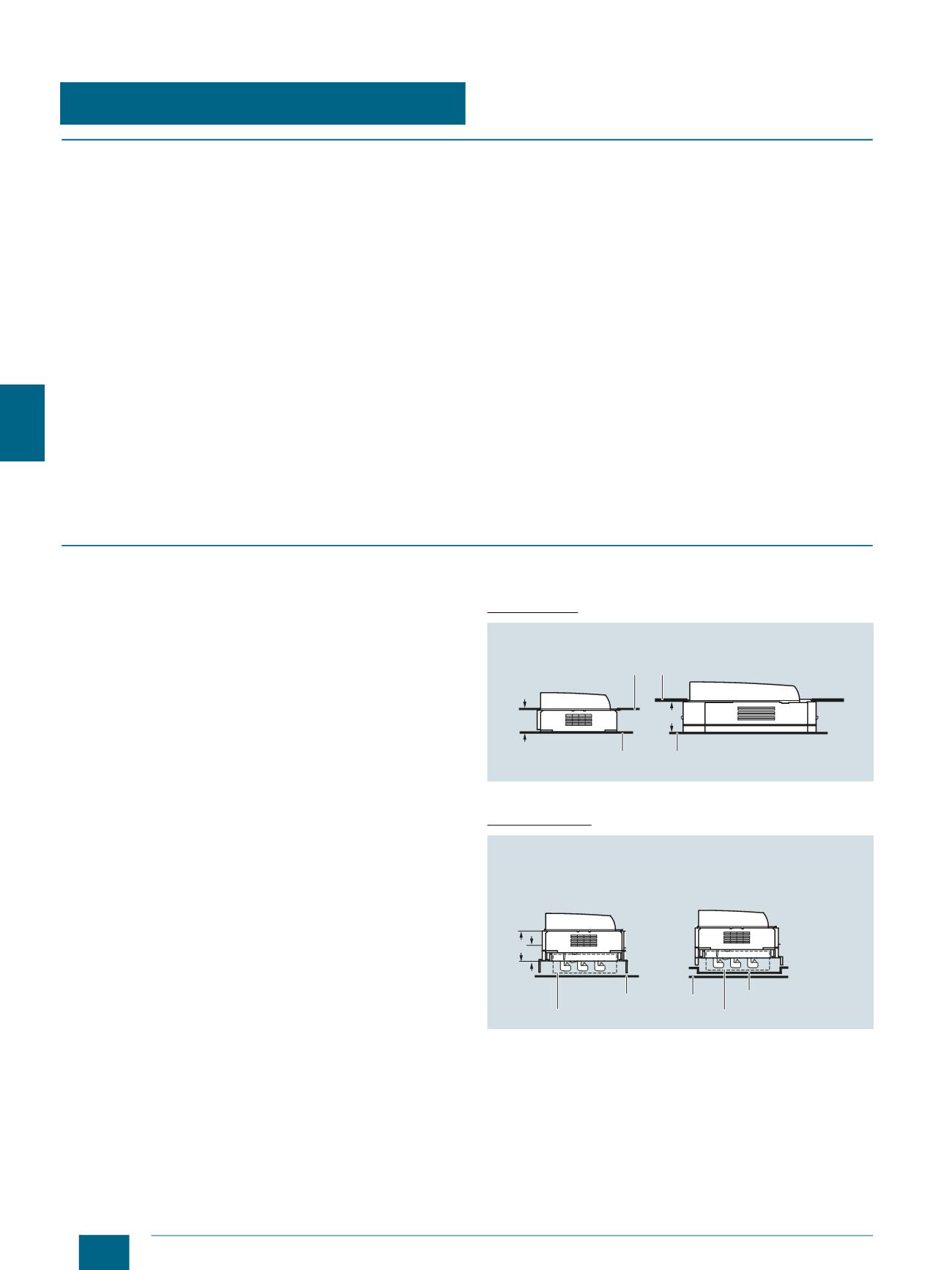

Switch Disconnectors
3NP1 Fuse Switch Disconnectors up to 630 A
Introduction
7/116
Siemens LV 10 · 2014
7
■
Benefits
Advantages during planning and configuration
• Low level of equipment variation due to easy convertibility of
cable feeder at top/bottom (delivered from factory with cable
feeder at bottom).
• Only one device variant for applications in industry and infra-
structure thanks to touch and reach-around protection as a
standard feature.
• Uniform grid sizes for easy configuration.
Advantages during operation and service
• The optional rear covers for the cable connections ensure
optimum touch protection even for switchgear assemblies
with rear access.
• Innovative design enables the highest safety for equipment
and personnel.
• Fuses can be released and removed using a release shaft.
• Lockable and sealable design enables safe working and pre-
vents unauthorized access.
Advantages during installation
• Only one device version is required for cable feeders at
top/bottom and there is no need to intervene in the internal
conducting paths.
• One device version with very high short-circuit values dis-
penses with having to order and install arc splitters to increase
the electrical values.
• On all sizes it is possible to install 2 CO contacts for indicating
the switching position.
• All devices feature all-round touch protection.
• Box terminals are available for all sizes and shorten the
mounting time appreciably.
• Snapping on the sizes NH000 and NH00 shortens the
mounting time greatly compared to fixing with screws.
• The screw-fixing method on sizes NH1, NH2 and NH3 pro-
vides for easy positioning and at the same time secure con-
tacting of the larger and heavier device versions.
• Small space requirement through compact devices and bus-
bar supports which can be built over.
• Device versions for busbar mounting can be converted to
5 mm or 10 mm thick busbars without parts which can be lost
or broken off.
■
Application
Possible uses
3NP1 fuse switch disconnectors can be used for protecting and
switching the most diverse electrical loads:
• Motor starter combinations
• In conjunction with SITOR semiconductor fuses for the
protection of frequency converters and soft starters
• Fusing of compensation modules
• Cable feeders
• Group fusing of small loads
The devices are optimized for operation in all kinds of system
environments:
• Low-voltage switchgear assemblies for power distribution and
MCCs (e.g. main and sub-distribution boards)
• Distribution systems with cover levels of 32 and 70 mm or
45 and 70 mm
• Mechanical engineering
• Railway applications
Fuse monitoring
Fuse monitoring is used to detect, indicate and report faults:
• MFM – electromechanical fuse monitoring for AC/DC networks
• EFM 10 – electronic fuse monitoring for AC networks
• EFM 20 – electronic fuse monitoring with line monitoring
for AC networks
• EFM 25 – electronic fuse monitoring with line monitoring
for DC networks
Standards and specifications
The 3NP1 fuse switch disconnectors are compliant with:
• IEC 60947-1, EN 60947-1
• IEC 60947-3, EN 60947-3
Mounting
Floor mounting
3NP1 fuse switch disconnector for floor mounting
Busbar mounting
3NP1 fuse switch disconnector for busbar mounting
System
cover
(alternatively)
Mounting plate
Size 1, 2, 3
Size 000, 00
NSG0_00236
70
45
Mounting plate
Busbar support
Busbar support
Base
Mounting on Siemens 8US
busbar systems with 32/70 mm
cover level
Mounting on Rittal Riline 60
busbar systems with base
70
32
NSG0_00237
© Siemens AG 2014


















